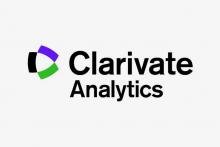Report urges shift to visual research profiles

Clarivate Plc has released a report from the Institute for Scientific Information (ISI), which further promotes the shift from a reliance on simplistic research metrics towards an adoption of visually informative profiles. The report also encourages actionable engagement and input from the global research community. Such profiles promote a comprehensive understanding of research activities, to direct policymakers and research managers towards evidence-informed decisions that lead to positive outcomes.
Unpacking research profiles: Moving beyond metrics focuses on four aspects of research activity and academic publishing, where profiles reveal key information – at researcher, journal, institutional and research field levels. The in-depth analysis draws on Web of Science data to show how profiles serve as valuable tools to aid interpretation, explain unexpected results and guide future investment.
Clarivate says the report focuses on four key areas, as follows:
- Individuals and their publications: The issue of excessive self-citation in research publications is addressed, with identification of outliers following examination of the distinctive patterns of self-citation observed among Highly Cited Researchers, while considering variations in citation rates between fields.
- Future research trends: Research Fronts identifies current areas of research attention by analysing frequently cited, recent papers that cluster together, providing valuable insights for research planning, resource management and policy decisions.
- Journals and their characteristics: The profile and value of a journal in the Web of Science is more than its Journal Impact Factor. The report explores how the indicator of national orientation (INO) offers new perspectives on journals, helping researchers choose the best venues for their papers.
- Influence of international collaboration: Simple metrics mask the influence of well-cited, internationally co-authored papers, so cannot be properly used to assess them. Collaborative Citation Impact (Collab-CNCI) allows deconstruction of impact, enabling better evaluation of domestic and international activity.
Jonathan Adams, Chief Scientist at the Institute for Scientific Information and report co-author, said: “Our aim is to empower decision-makers with comprehensive analyses that deliver meaningful research insights. A key to appreciating the need for rich, visual profiles, rather than simple metrics alone, is to be aware of and acknowledge the underlying statistical distribution of the data. By shifting from simple metrics to visually informative profiles, one can unlock a wealth of valuable information that aids in understanding research activities, identifies unexpected results, and supports informed policy and management decisions.”






